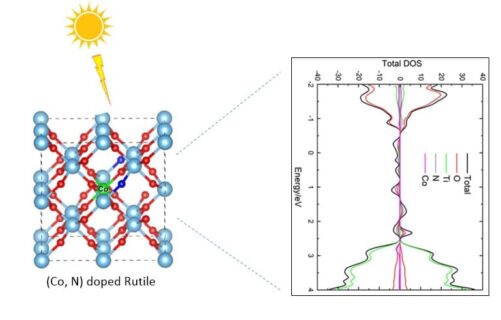Electronic band gap calculation of N, Co, and (N, Co) single- and dual-doped rutile phase: a hybrid periodic DFT study
Authors
Abstract
TiO2 is a highly desirable photocatalyst due to its abundance and low cost. However, its large band gap restricts its ability to absorb a significant portion of visible light. This issue can be addressed through cationic or anionic doping. In these instances, the impurity bands reduce the band gap. Nevertheless, in order to enhance the photocatalytic activity, these bands need to be distributed among the atoms. In this study, we investigated the electronic structures of rutile bulk phases co-doped with cobalt and nitrogen. Data show that the single doping of rutile by N and Co reduces the band gap by 26% and 42%, respectively. For the (N, Co) dual-doped rutile, the band gap value depends on the relative position of the dopants. When placed in the nearest neighbor configuration (nearest model), the band gap only decreases by 25%. However, if the dopants are positioned far from each other (far model), the catalyst becomes half-metallic with the spin-down channel’s band gap equal to zero. The calculated spatial delocalization indices (SDI) for the impurity bands reveal that the far model of (N, Co) dual-doped TiO2 exhibits the highest SDI value compared to the other cases. All studied catalysts displayed magnetic properties. The magnetic moments of single-doped catalysts are 1 μB, while the magnetic moment of the dual-doped catalyst is 2μB.
Highlights
► Hybrid method of PBE0 was used to calculate optical band gaps of pure and doped rutile.
► All the doped TiO2 are visible active photocatalysts.
► In some cases, the band gap is less than 2.0 eV, which are good candidates for solar photocatalysts.
► All predicted data are in line with the available experimental ones.
► Hybrid data show that the (N, Co) dual doped TiO2 is a half-metal and could be used in spintronics.





